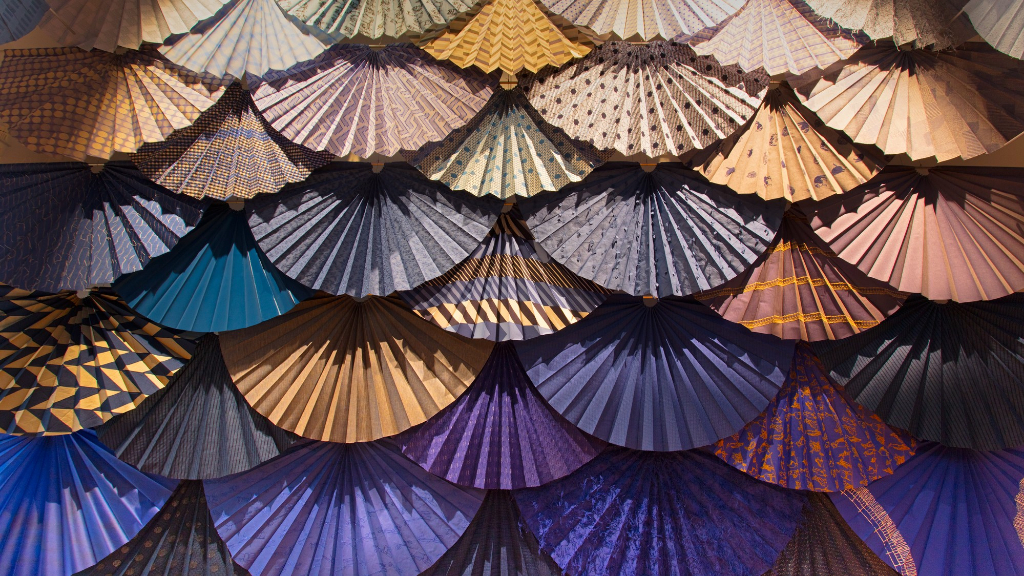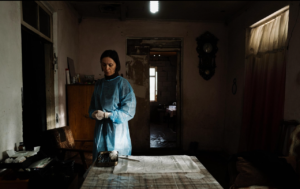Fabric: Touch and Identity at Compton Verney online

Evidence of fabric weaving has been traced back as far as at least 8,000 BCE in the Middle East. Clothing and textiles reflect the technologies of historical eras as well as social customs and culture. In March this year, an exhibition three years in the making, Fabric: Touch and Identity, was due to open its doors at the Compton Verney Gallery and Park in Warwickshire. Sadly, the decision was taken in the public interest to close the gallery, which is based in a grade I-listed Robert Adam mansion surrounded by 120 acres of landscape shaped by the legendary “Capability” Brown, as a result of the Coronavirus epidemic.
The show has been put together by professor Alice Kebble of Manchester Metropolitan University and Lesley Millar from the University for the Creative Arts, who have published an accompanying book, The Erotic Cloth (Bloomsbury Academic, 2018). A provocative, engaging exhibition featuring around 20 works, it considers the sensuality of fabric and textiles and how they have been explored through the centuries to shape and challenge ideas regarding personal and sexual identities. In the words of Julie Finch, Director of Compton Verney: “This exhibition artfully explores the relationship between touch and fabric, we’re presenting fresh and creative perspectives on the subject, revealing the hidden importance of fabric.”
An international line-up of artists working in a number of disciplines have been brought together here, ranging from fashion trailblazer Vivienne Westwood to weaver Raisa Kabir, sculptor and one-time Turner Prize nominee Cathy de Monchaux, and textile designer Reiko Sudo. The works have been arranged in four galleries. The history of fabric and its sensual character is examined at the start. “The Response Body” in the second gallery has as its theme the role fabric has played in the exploration of sexuality. In a third gallery, entitled “Between Cloth and Skin”, the material itself is considered. The exhibition concludes with a commissioned installation by Reiko Sudo.
The first exhibit, My Love, I Will Eat You Alive (2016) by the Lithuanian textile artist Ruta Naujalyte, is a wall-paper covering the entrance wall. Her crocheted amulets and threads have been photographed and digitally manipulated to create flower-like images which also allude to female sexuality. Compton Verney boasts a notable collection of works by Sir Joshua Reynolds, and his Mrs Baldwin in Eastern Dress (1782) features here. The Turkish-born sitter married the British consul general in Egypt and after moving to England she chose to exaggerate the perceived exoticism of her ethnicity. Depicted in a turban and the favourite green and gold kaftan she once wore to a royal ball, she conveys to the world how she wants to be presented.
There’s plenty more to bewitch and intrigue. A Haori Shunga Kimono dating from 1890-1920, made for a man, at first appears austere until one becomes aware that the surface facing the body bears a rather naughty concealed image of a beautiful woman bathing. For her piece Feminist Fabric: A Fat Corset (2010), Raisa Kabir has layered together three handmade corsets made from Edwardian pattern. The corset’s tradition for eroticising the female form and restricting a woman’s movements is thrown a challenge here; Kabir’s more accommodating contraption releases the female flesh, questioning our view of female sexuality and how we buy into a particular version of that sexuality.
Two other works, displayed side by side, highlight how we define our identity through dressing up and playing out our notions of fantasy. Nigel Hurlstone’s What Pleasure (2013) sees the artist using an early 20th-century monochromatic photograph of a young man dressing up in military costume from the private collection of Montagne Glover, an architect and photographer of the period. Hurlstone has stitched over the enlarged image in ombre thread, engulfing this intimate portrait with a veiled sensuality. Vivienne Westwood’s Red Suit, from 1992, stands alongside it as an elegantly tailored take on the punk counterculture she was so much at the heart of. Contesting social and moral attitudes, it comes with a bondage strap between the legs. The suit’s owner, the graphic designer Malcolm Garratt, actually wore it and remembers how powerful and “superhuman” it made him feel.
Reiko Sudo’s immersive, site-specific installation Ogi No Mai / Japanese Fanfare provides a spectacular conclusion. Sudo and her company Nuno push the boundaries of traditional Japanese textiles. This installation consists of over 200 large blue fans which cover the walls and ceiling. Each has been dyed indigo, the dominant colour of Japanese clothing until the twentieth century. The particular fan has its origins in Japan, so historically and in their colour they are entwined in Japanese culture. On another level, the open fan can be interpreted as a seductive extension of bodily movement.
This playful exhibition sheds light on how clothes and fabrics reveal, hide and seduce. Eyes will be opened and social assumptions subverted. If or when we next have the chance to step through Compton Verney’s doors, we will find here a dose of sensual delight after this difficult period.
James White
Image: Ogi no mai / Japanese Fanfare (2020). Textiles by Reiko Sudo, scenography by Adrien Gardère, production by Kazuhiro Ueno. Photograph by Jaime Woodley
Fabric: Touch and Identity is available to explore on Compton Verney’s website from 14th March until 14th June 2020. For further information visit the exhibition’s website here.


























Facebook
Twitter
Instagram
YouTube
RSS